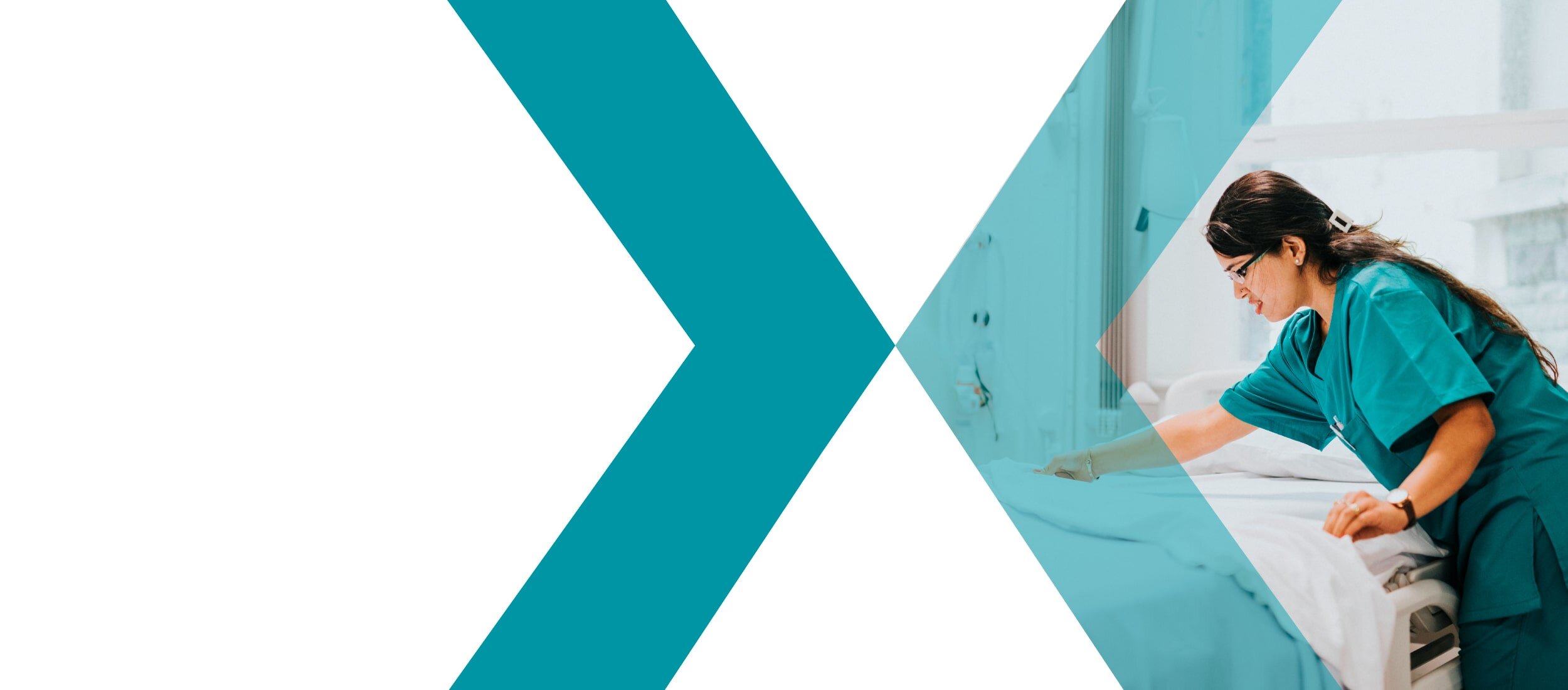
Acute Care
Helping you provide a variety of hospital-based services to care for a diverse range of patients 24 hours a day, seven days a week.
We have a granular understanding of the processes, pain-points and workflows associated with providing acute care services
Maintaining continuity of care, managing workflow inefficiencies and preserving patient flow
Within the hospital setting, a wide variety of patients from medical, surgical and specialty departments must be managed around the clock, with their care often managed between multiple care givers across different shifts and departments. This creates pressure to maintain efficient workflows, deliver well co-ordinated transfers and provide timely care, so that work is not duplicated or delayed following handover between care givers and departments. This all contributes to facilitating smooth discharges, so that beds can remain available for the patients in need, whilst at the same time maintaining a high quality of care.
In addition, many different outpatient clinics and services are also running during peak times, and it is crucial that investigations and care plans are appropriately shared and communicated with the relevant members of the multi-disciplinary care team (MDT), so that the appropriate treatments and interventions can be co-ordinated and provided in a timely manner.
Enhancing and supporting acute clinical workflows
Enterprise wide, integrated and delivered in real-time
With so many staff within multiple departments providing care 24/7, it is essential that individual workflows are optimised and co-ordinated leading to cumulative efficiencies across the enterprise. Having a shared record of care to work from helps ensure that teams are working synergistically and enhances communication amongst and between departments (such as during clinical handover between shifts/different specialties), reducing the duplication in activities (such as the ordering and checking of investigations) and improves productivity.
With medical records provided through a single point of access, information becomes available and accessible at the right place at the right time to inform clinical and administrative decision making. This contributes to efficiencies at scale that contribute to a smooth flow of patients in and out of the hospital supported by well co-ordinated discharge pathways (e.g. including the appropriate management of clinical reviews, discharge medication and discharge summaries).
A healthcare staff and patient-focused approach
Modern, Intuitive and Scalable
IMS MAXIMS’ suite of products provides all the above in a modern, patient-centred web platform that ensures clinical and administrative stakeholders can perform their critical workflow tasks in a safe, secure and efficient way. For both inpatients and outpatients, from patient arrival to referral internally or discharge, MAXIMS supports each member of the urgent care team, through an intuitive interface.
Supporting all areas of the acute setting
One point of access yet rich in functionality
The MAXIMS suite provides enterprise-wide scheduling and supports a range of integrations with key systems such as the Patient Demographic Service (PDS), eReferrals and Referral to Treatment (RTT) reporting. It is a comprehensive clinical and administrative solution suitable for use in a variety of care settings from an individual departmental level to a hospital group level.
Bed management and tracking capabilities are built in from the start to allow demand and capacity planning measures. A robust partner integration setup allows for medical device integration and the viewing of electronic observations in real time. eWhiteboards allow for multidisciplinary planning and the efficient transfer of care to specific professionals or teams or to subsequent providers (primary care, community and mental health care or internal referrals to specialty teams in the hospital) and the ePrescribing module allows for a safe, auditable medicines management process that can help drive transformational goals such as sepsis care improvement. Any patient’s previous medical history can be easily viewed and added to through our Clinical Workflow and Clinical Noting tools and care provision can be utilised on any mobile device as well to support workers across disparate sections of any urgent care area.
Patient Administration
Patient Administration Systems (PAS) is at the core and provides the foundation of any electronic Health Record (EHR). Our MAXIMS PAS is secure, utilising locally configurable role-based permissions sets to make information available only staff authorised to see it. Our solution also provides enterprise-wide scheduling and is fully interoperable with all the key departments like outpatient, therapies and theatres. The solution fully supports eReferral Service (eRS) and the Patient Demographic Service (PDS) as well as locally configurable referral to treatment (RTT). Although MAXIMS PAS can be implemented and used as a stand-alone solution it is a fully interoperable component within the MAXIMS EHR which include mobile.
Electronic Patient Record
MAXIMS EPR was originally developed to provide a safe, paperless, clinical record supported by a comprehensive patient management solution. Our solution is used widely in the NHS in the UK, the HIE in Ireland as well as Independent hospital groups or private hospitals. Our EHR was designed to deliver paper-lite end-to-end care and administration for patients. We use digital solutions to solve challenges to automate or improve the capture and display of relevant information wherever its needed. MAXIMS provide a comprehensive clinical and administrative solution suitable for use in a variety of care setting from a departmental level to a group of hospitals. The IMS MAXIMS team are also expert at delivering integration allowing customers the choice to capitalise on past investment or support the clinician's choice of specialist system.
Releasing Time to Care
Delivering care is all about the patient and allowing the clinician the opportunity to interact, focus and then easily record their findings, interventions or treatments. Technology can then be applied to turn unstructured text into structured text which in turn can be coded removing several steps from current processes. Allow the clinician to focus on patients, automating processes and making information available when and where it's needed highlight some of the clever ways the IMS MAXIMS team use modern technology to support clinicians in ways that make a difference releasing time to care.








